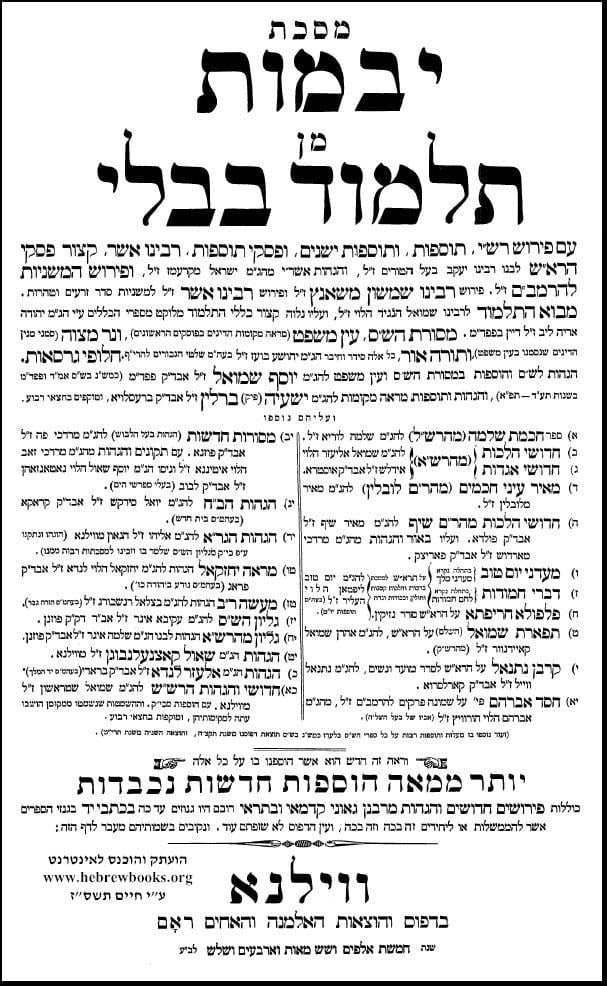The Coming Week’s Daf Yomi by Rabbi Adin Steinsaltz
This essay is based upon the insights and chidushim (original ideas) of Talmudic scholar Rabbi Adin Steinsaltz, as published in the Hebrew version of the Steinsaltz Edition of the Talmud.
Seder Nashim
The Order of Nashim is a rather small order, containing seven tractates, some of them quite big and some of them much smaller. Even though the name of the Order means “women,” the order does not even attempt to deal with this subject itself. Rather, it contains most of the pertinent information about all the facets of the relationships between women and men. First of all, it gives a detailed and very comprehensive listing of marriage relations: those which are permitted and those that are prohibited because they infringe upon incest and adultery (a major part of Tractate Yevamot and some of Tractate Kiddushin). It also deals with the structure and forms of marriages on the one hand (mostly in Tractate Kiddushin) and of divorces on the other (Tractate Gittin). In addition, there is Tractate Ketubot that embraces rules, regulations and customs of actual married life: from financial contracts between the sides to descriptions of many additional physical and emotional elements that are part of married life. These tractates are the main part of this Order and deal with its most central issues.
However, the Order of Nashim contains three other tractates that are connected more or less loosely with its main subject. The most straightforward connection is that of Tractate Sotah, which deals with the very special laws pertaining to a wife suspected of adultery. Yet this Tractate also deals quite extensively with many ceremonies that used to be done in the Temple and with other Temple-related issues. Tractate Nedarim, which deals with vows, their definition, their compelling power and the ways of annulling them, is much more loosely connected with the Order, the main reason being one chapter in it that deals with the special status of a wife and of an unmarried daughter. Structural and formal similarities are the reason for the inclusion of an additional Tractate, Nazir. This Tractate deals with all the laws pertaining to the nazirite: the vows, the restrictions and the purification that sometimes is part of the process.
Although this Order, like most of the Talmud, does not make any theoretical-philosophical statements about itself, its leitmotif is embedded in all of its tractates. The main idea is stated in the Book of Genesis, in the story of the creation of the woman. This is the source of the main idea – namely, that the man-woman relationship is not just a male-female relationship. All the complex laws of permitted and forbidden relations are, in fact, only elaborations of the basic verses in Genesis. Generally speaking they say that the pre-eminence of mankind over the animals is not just a matter of superior knowledge or power: it also entails so many complexities and restrictions. The man-wife relationship therefore goes far beyond the relationship between two individuals: it also involves multifaceted interactions with their families, friends and relatives, as well as with society as a whole.
In addition to his monumental translation and commentary on the Talmud, Rabbi Steinsaltz has authored dozens of books and hundreds of articles on a variety of topics, both Jewish and secular. For more information about Rabbi Steinsaltz’s groundbreaking work in Jewish education, visit www.steinsaltz.org or contact the Aleph Society at 212-840-1166.
The words of this author reflect his/her own opinions and do not necessarily represent the official position of the Orthodox Union.

